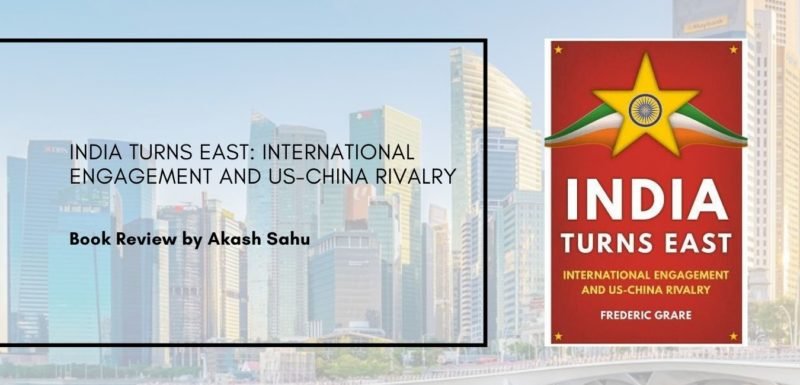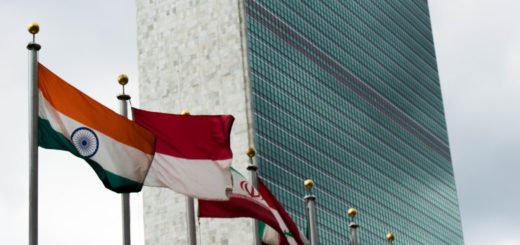Review: Frederic Grare’s ‘India turns East’ and the changing world order

The book ‘India turns East’ is a comprehensive account of the trajectory of India’s engagement with East and Southeast Asia over a substantial period of time, more specifically after the cold war.
It is divided into chapters that lay down the progression of India’s actions on the ‘Look East’ and ‘Act East’ front. The language of the book is simple and concise; in tone with the discourse in policy circles. A very unique feature of the author’s style of the presentation includes the creation of timelines well synchronized with the change in Indian foreign policy over the years.
It begins with an introduction to outlining China as the major player of the Asian theatre. He writes about the rise of China and efforts of the international community to ‘manage’ its apparently aggressive rise. In today’s context of a vulnerable world order with respect to the COVID-19, the book assumes even greater significance.
India’s balancing of the giants
In the first part, bilateral relations of India with both China and US are highlighted in a very descriptive and explanatory manner. The turning point in India-China relations is the war of 1962, as is evident from the book; post which there has always been an element of animosity between the two countries.

India’s lethargic administration at the time when China was liberalizing its economy is quite transparent in the book; which can also be attributed to its preoccupation with internal problems such as abject poverty and famines. It is a point of self-evaluation and a lesson. India’s actions are associated with many nations in its vicinity and beyond, but its inaction during periods of transition could reverberate even louder for global geopolitics.
India, for the most part after its independence, had been seen as a country that might enforce dominance in the Indian Ocean region, which is ironic since the formal adoption of Non-Alignment as a policy was reflective of its respect for the autonomy of all nations.
The author has provided good insight into why such perceptions might have existed. India’s closeness to the USSR was central in such perception building because many countries in the Southeast Asian region were part of the US-led western system of alliances. The hangover of the Indo-Soviet closeness only went away as Indo-US relations gained momentum. The end of the cold war also quashed the fear of Indian invasion or dominance in the Indian Ocean, allowing the possibilities for greater Indo-ASEAN cooperation.
Perception of India in the East
India’s special status, vis-à-vis the Indo-US nuclear deal of 2008, has been a game-changer. America’s trust in India, through this deal, acts as a testimony of India’s ‘noble intentions’ to American allies. It has opened gates for India to develop better relations with US-friendly countries like Japan and South Korea, as well as, Australia.
The special status that the US has conferred on India through this deal reflects the geostrategic importance India holds in the Asian landscape. America’s warming up to India also has a strong correlation to the unflinching rise of the Chinese economy and military.
The Southeast Asian nations have long and well played the balancing game with China and the US. They have, however, felt the need of a formidable power balancing China in the geographical vicinity. The author says that India is seen as a genuine security presence in the region now.
In recent years, Australia and India have seen increased bilateral cooperation. The author outlines how Australia’s history and direction of foreign affairs were different than India, but much before the ‘rise of Asia’ as featured in popular discourse, Australia’s economy was dependent on the growth in Asia-Pacific region. This has eventually brought the two countries together, more so with the shared values on Indo-Pacific. The Australian government has recently suggested stronger trilateral cooperation among India, Indonesia and Australia; all of which could be seen as ‘custodians of the Indian Ocean.’

The Southeast Asian Affair
India’s defence relations with Vietnam have been given a special place considering its strategic location, closeness and history with China. The ‘ASEAN centrality’ could well be viewed as the centrality of Indonesia in ASEAN, given its largest size and economy, and vital geography. With regard to balancing China, these two countries occupy significant positions in the Indian foreign policy.
Myanmar is India’s only terrestrial connection to Southeast Asia. Myanmar’s history of a military junta led to its alienation for a long period during which its closeness to China grew multi-fold. The author does explain how India changed its stance on Myanmar as it saw growing inclination to China in the early 1990s itself, but a great deal of friction has persisted over the decades.
With great finesse, the author in this section and many others in the book illustrates the simultaneous developments of geopolitics, where negligence for even a short period of time, is quickly exploited by another player in the international theatre. If India’s northeast was sufficiently integrated with mainstream politics, Myanmar wouldn’t be so distanced from the Indian ecosystem.
Work in Progress
The book is reflective of the author’s long experience in diplomacy and deep insight into statecraft. He has provided for the reader a bird’s eye view that allows looking at the bigger picture, essentially related to the past but devising a set of predictions for the future.
Perhaps a successive edition of the book could talk about the involvement of western and west Asian powers in the Indo-Pacific theatre, and their expectations of India. The Indo-Pacific attracts considerable interest from these regions, and there are avenues where India can work with Britain, France, the EU and the Gulf countries for better cooperation in the vast Indo-Pacific.
In the times when China’s weight looms large over the South China Sea, most global powers are worried. Swift changes in policy are expected as countries fight the COVID-19, and their military and diplomatic powers are transformed. A defensive China and its ‘wolf warrior’ diplomacy will exasperate geopolitical competition, as soon as ailing powers show the first sign of recovery.



















